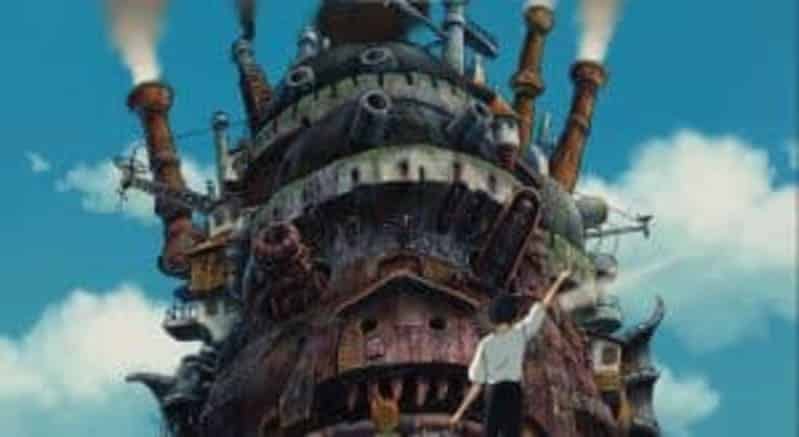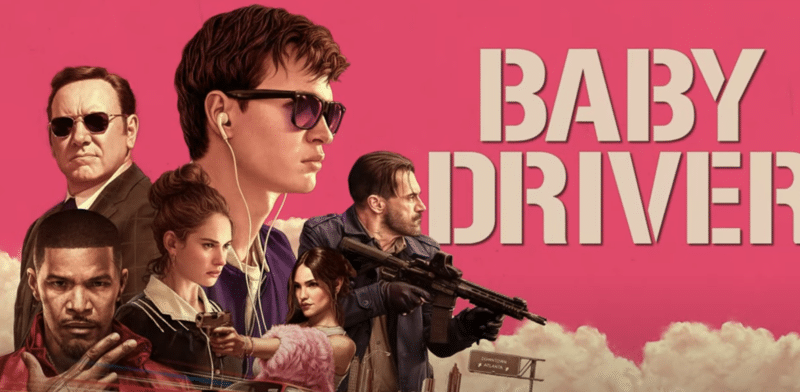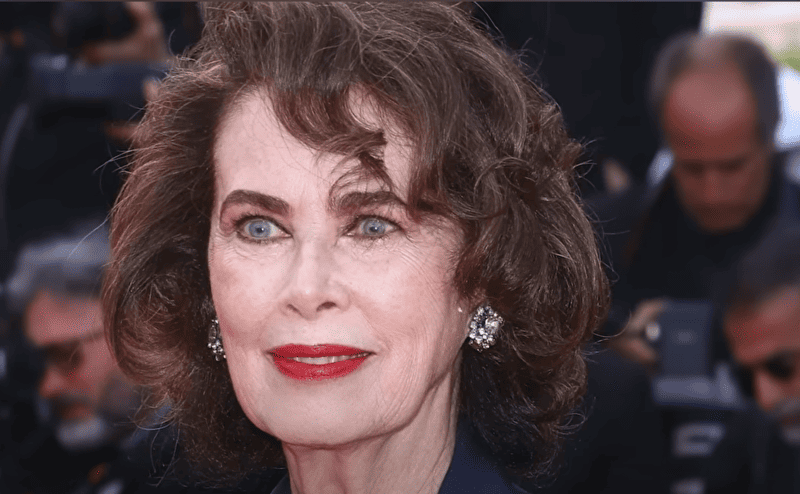In the 2000s, Studio Ghibli thrived on the animation scene with its whimsical imagination, outstanding narratives, and strange character designs attracting adults and children everywhere. Alongside Disney, they developed five films that later inspired an entire generation of artists with realistic themes mixed with fantasy.
One of these movies is about a traveling wizard who lives in a strange mobile home and a young woman under a witch’s curse to look elderly. And that film is Howl’s Moving Castle. I recently revisited Howl in 2023 while exploring older Ghibli movies such as Porco Rosso and Whispering of the Heart. The question is, “Does my nostalgia hold up two decades later?”
How Ghibli Retold Howl’s Trilogy
Before Howl’s Moving Castle came to life on the big screen, it was a trilogy under the Howl series by Diana Wynne Jones. Ghibli uses the first book’s title since it fits the story’s magical world. The other two titles, The House of Many Ways and Castle in the Air, are portrayed in the film’s progression from middle to end.
Watching Howl’s Moving Castle as an adult gave me a new appreciation for Ghibli’s efforts to recreate Wynne Jones’ story while preserving most of its world-building. Even the author herself found the animation outstanding when Hayao Miyazaki privately showed the movie in the summer of 2004. And what drew these two storytellers through this experience is their perspective on war.
During the process of Howl’s film, US President George Bush was granted permission from Congress to use military forces against Iraq. This call to action affected Miyazaki immensely as his earlier films such as Porco Grosso and Grave of the Fireflies depicted how wars cause suffering and trigger immoral actions. Let’s learn about Miyazaki’s attempt to convey his message from the animation’s events with Wynne Jones’ original trilogy.
A War Develops Over Time
In Wynne Jones’ Howl, the two countries, Ingary and Strangia are at a stalemate as their conflicts grow over time and the call to war is inevitable. This plot becomes more relevant in Sophie’s and Howl’s fantasy romance during the 2nd half of the first novel and their sequel, Castle in the Air.
After Howl and Sophie defeat the Witch of the Waste, Turnip-Head reverts into Prince Justin of Ingary, the missing prince mentioned in the film, and Kingsbury‘s missing wizard, Benjamin Sullivan, who is Madame Suliman‘s original character in the novels mixed with Howl’s tutor, Mrs. Pentstemmon. That’s right, Turnip-Head is a combination of two characters instead of one thanks to the Witch of the Waste’s desire to concoct the perfect man to be King of Ingary and be his queen.
Prince Justin’s role is the informant and preparer of the Ingary-Strangia war. Then in Castle in the Air, Justin negotiated with the Princess of Strangia, Beatrice an act of peace with a treaty to cease further action on using magic for war after rescuing her from the djinns Dalzel and Hasruel. That included crafting magical equipment like the seven-league boots that Howl and Markl designed for Ingary’s army to travel 10 feet per step.
While this was not in Howl’s film, we still see the war’s development and its horrors spreading from Porthaven to Sophie’s hometown, Market Chipping. We start with colorful cities cheering on their soldiers as they march through the streets. As the war progressed, those colorful cities soon burned and their population searched for shelter and safety.
There’s a scene where Markl answers the door twice from Kingsbury and Porthaven. A message from the Royal Palace arrives for Howl under his two aliases, Pendragon and Jenkins. Howl serves the war on his own accord witnessing wizards and witches being used as monster ammunition in their battleships.
What Miyazaki added in the film is Madame Suliman’s magic extraction machine. She sends the King of Kingbury’s invitation from the Royal Palace to recruit witches and wizards to aid the Ingary-Strangia War. If they do not comply, she uses intense light exposure from her machine to extract their magic.
This is Madame Suliman’s reaction to Howl’s cowardice and the Witch of the Waste’s greed. It’s a reflection of any soldier serving under the Axis Powers who lost their lives after hiding from their duties or defying their countries’ loyalty during WWII.
Curses Affect Your Personality
The movie follows the protagonist, Sophie who meets Howl in an alleyway in Market Chipping. He uses magic to ward off the two creepy soldiers hitting on her and escape the Witch of the Waste’s henchmen. When her sister Lettie learns about her floating down the bakery, she warns Sophie to be careful around Howl as he is known to steal girls’ hearts. Sophie comments, “He only does that with pretty girls”.
What the girls are referring to here is Howl’s persistence in chasing women using magic to make him look attractive or impress them. In his novel, Howl is a magical playboy. Why does he do this?
According to Madame Suliman, the fire demon Calcifer took his heart. Ever since then, Howl has been living without one and has succumbed to misusing his magic. I felt this explanation needed more clarity so I examined the film and book deeply. Here’s what I discovered.
Once someone makes a contract with their curse or demon, they develop a personality around it. For Sophie, it’s her acting her age as a stubborn, curious yet kind grandma. Whenever she lovingly talks about Howl, Sophie slowly reverts to her youthful self. Until she discourages herself or denies she loves Howl, she becomes Grandma Sophie.
The Witch of the West is consumed by a demon of greed which explains her obsession with handsome men and her jealousy for any woman interacting with Howl. In Howl’s novel, she has a fire demon named Miss Angorian who can transform into an attractive, fierce woman. She could be the reason the Witch of the Waste never aged until her magic gets extracted by Suliman’s machine.
Calcifer requires paying attention to the details. During Sophie’s cleaning scene, she reaches the second floor and gets a view from the window and the balcony. Sophie admires the Waste’s scenery as the castle travels towards Star Lake. She exclaims to Calcifer, the castle’s controller and fuel source, that she likes his spark which causes him to burn bright and create a burst of steam.
He reacted the same way during Sophie’s attempt to rescue Howl during Market Chipping’s air raid. She offers Calcifer her braid, giving him the strength to create a mini moving castle. Calcifer’s personality revolves around passion which explains why Howl is obsessed with searching for a partner who will share a passion for him.
Turnip-Head is a strange curse as his character, Prince Justin of Ingary, had more story in the Howl trilogy. In the movie, they use the true love’s curse. To remove it, the prince must get true love’s kiss. He acts like a gentleman around Sophie to slowly gain her trust and love.
However, in the novel, Justin is cursed to be a part of a scarecrow because of the Witch of the Waste’s desire to create the handsome man. Any body part she didn’t use, the Witch will sell them to a buyer.
Transformation Has a Cost
Transformation magic plays a vital part in the Howl trilogy. Whether it’s to make yourself look beautiful, or walk in disguise, someone is using a transformation spell. Yet there is a cost to using over time.
As previously mentioned, witches and wizards have transformed into monsters for the war effort. Howl can transform into a large raven harpy. Over time, this kind of magic affects the user’s memory and physical being.
In the scene where Howl comes home and sits across Calcifer at the hearth, Calcifer tells his master, “You shouldn’t keep flying around like that. Soon you won’t be able to turn back into a human.”
Then he comments on Howl’s report on the mad wizards who attacked him, “Those wizards are going to regret doing that. They’ll never change back immediately.”
In Howl’s novel, the dog-man Gaston proves this fact when confronting Howl to stay away from Lettie, who studies under the witch, Mrs. Fairfax. He’s sometimes referred to as Percival, his old name he does not recognize as his own. The longer he becomes a dog, the more he forgets who he is.
To me, transformation is more than a change in appearance. It’s also how the cast changes throughout the story. Howl and Sophie influence each other to search for what they want in their life. Howl wants his freedom from being a wizard while Sophie is unsure since she’s held responsible for keeping her late father’s hat shop running alongside her mother, Honey, or in the novel, her stepmother Fanny.
As Grandma Sophie, she gives the castle an intensive cleaning, cares for Markl (a wonderful nod to the novel as she helped Markl study magic while he took care of her), and understands Howl’s troubles despite being a coward and drama queen. Howl was never open about his feelings until he met Sophie. The only being in the castle that he talks to is Calcifer.
The war made them grow closer each time Howl had to depart to the battlefield. Sophie is constantly worried each time he returns after a few days. Even the navigation ring connected to Howl and Calcifer guided her to their past, understanding how to break their curses. A nice use of House of Many Ways’ magic door can travel through time and locations.
Beautiful, Yet Not Perfect
Howl’s Moving Castle to this day is still a lovely piece of Ghibli’s animation era of the 2000s. It succeeded what Miyazaki envisioned for his reimagining to display the effects of war. The witty dialogue still makes me laugh at times. And analyzing every nook and cranny to discover context I never knew Ghibli put in.
However, it does have its faults once you read Wynne Jones’ book trilogy. The film left out a few key details that weren’t implemented.
The Families of Sophie and Howl
While there is a family aspect, I felt Miyazaki could have gone in a better direction if he had the actual families of Sophie and Howl. We only got to know very little about Sophie’s family in the beginning. Howl’s only mentioned family member was his uncle who gave him the meadow space and tiny cottage.
Howl has a sister named Megan Parry, his brother-in-law Gareth, and their two children Mari and Neil who live in Wales. Megan’s harsh criticisms of Howl’s appearance are one of the reasons Howl acts cowardly around assertive women and focuses heavily on his appearance.
Mari and Niel show love for their uncle since he’s a masterful wizard. Sometimes, Howl and Mari speak Welsh to each other. He helps Neil with his magic homework since English involves literature and spell reading. Neil is also a student of Miss Angorian, the Witch of the Waste’s fire demon.
There is also Howl’s tutor, Mrs. Pentstemmon. She assists Sophie in preparing her meeting with the King of Kingsbury. She later passes away, sending Howl into a stage of grief.
Sophie has her stepmother Fanny, her biological sister Lettie, and stepsister Martha. They have a broken family dynamic since the death of Sophie’s father. Sophie mostly stays in the hat shop because she’s the hat mender until she wants to visit her sisters.
Despite Fanny’s wishes, her siblings swap places to pursue what they wish to do. Instead of Lettie in the bakery, it would be Martha disguised as her. Lettie is studying to be a witch under Mrs. Fairfax. Martha has a misconception that Fanny uses Sophie to make money for personal shopping.
Both families near the novel’s end have a heart-to-heart moment about their differences, even if Megan had to get kidnapped by the Witch of the Waste to appreciate Howl.
Howl Hits on Lettie
Speaking of family, Howl hits on Lettie during Sophie’s time as a grandmother. How awkward must that be to discover? Lettie and her tutor, Mrs. Fairfax played a role during Howl’s first book. They assisted Prince Justin of Ingary in the search for Benjamin Sullivan by giving him a finding spell.
Lettie is described as skill-witted and pretty. One of those reasons Howl is attracted to her for a while. However, it was Mrs. Fairfax’s idea for Lettie to get closer to the wizard so she could learn magic from him. Preserving this event for the film could have translated well with Howl’s tantrum scene as Markl tells Sophie, “I saw him did this once when a girl dumped him.”
No Country Indication
We only learn about the cities of Ingary throughout the film. Yet you don’t know what country we are watching from. If you read the book first before the movie, you know it’s Ingary and the neighboring kingdom is Strangia. If it’s the opposite, you will assume it’s Kingsbury, Ingary’s capital.
Prince Justin is from Strangia instead of Ingary. It makes sense for the film’s retelling as the Prince is trying to negotiate to stop the war rather than prepare for it. But because Strangia doesn’t have witches and wizards. Castle in the Air described their army as “normal”.
Sophie Never Knew She Has Magic
Howl’s film indicates that Sophie can tell Calcifer what to do. Howl comments in the cooking scene, “Not everyone can do that.” Miyazaki removes a crucial detail from Sophie to make it appear she’s human and that the viewer can relate to her in the world of magic.
In the novel, Sophie never knew her sewing ability until she made extravagant clothes under Howl’s orders. And when she uses her words in a certain way, they can affect the person she’s interacting with when they resist her.
More Book and Anime Content
Why is Lord of the Flies currently banned? Check out our Book article!
Did you know Akira’s lead animator made an anime? Read about it in our Anime tab!
About Total Apex
Total Apex is an all-encompassing content producer. We provide heavily-detailed articles daily on entertainment, gaming, sports, and so much more! Check out all our great sports content Total Apex Sports. Check us out on X @TotalApexEandG and our other sites: Total Apex Entertainment, Total Apex Gaming, Total Apex Sports Bets, and Total Apex Fantasy





